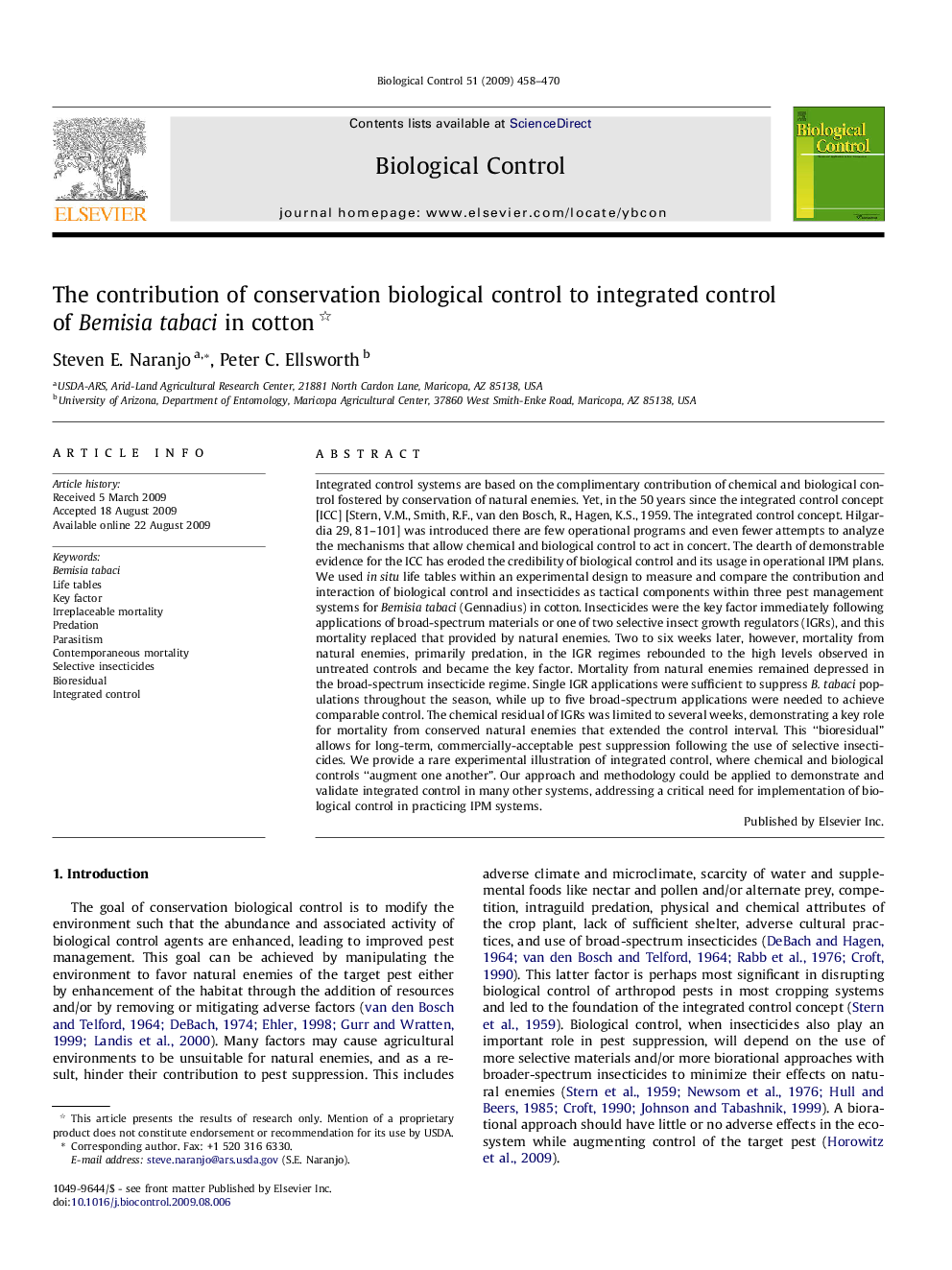| Article ID | Journal | Published Year | Pages | File Type |
|---|---|---|---|---|
| 4504549 | Biological Control | 2009 | 13 Pages |
Integrated control systems are based on the complimentary contribution of chemical and biological control fostered by conservation of natural enemies. Yet, in the 50 years since the integrated control concept [ICC] [Stern, V.M., Smith, R.F., van den Bosch, R., Hagen, K.S., 1959. The integrated control concept. Hilgardia 29, 81–101] was introduced there are few operational programs and even fewer attempts to analyze the mechanisms that allow chemical and biological control to act in concert. The dearth of demonstrable evidence for the ICC has eroded the credibility of biological control and its usage in operational IPM plans. We used in situ life tables within an experimental design to measure and compare the contribution and interaction of biological control and insecticides as tactical components within three pest management systems for Bemisia tabaci (Gennadius) in cotton. Insecticides were the key factor immediately following applications of broad-spectrum materials or one of two selective insect growth regulators (IGRs), and this mortality replaced that provided by natural enemies. Two to six weeks later, however, mortality from natural enemies, primarily predation, in the IGR regimes rebounded to the high levels observed in untreated controls and became the key factor. Mortality from natural enemies remained depressed in the broad-spectrum insecticide regime. Single IGR applications were sufficient to suppress B. tabaci populations throughout the season, while up to five broad-spectrum applications were needed to achieve comparable control. The chemical residual of IGRs was limited to several weeks, demonstrating a key role for mortality from conserved natural enemies that extended the control interval. This “bioresidual” allows for long-term, commercially-acceptable pest suppression following the use of selective insecticides. We provide a rare experimental illustration of integrated control, where chemical and biological controls “augment one another”. Our approach and methodology could be applied to demonstrate and validate integrated control in many other systems, addressing a critical need for implementation of biological control in practicing IPM systems.
